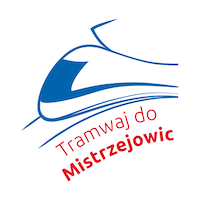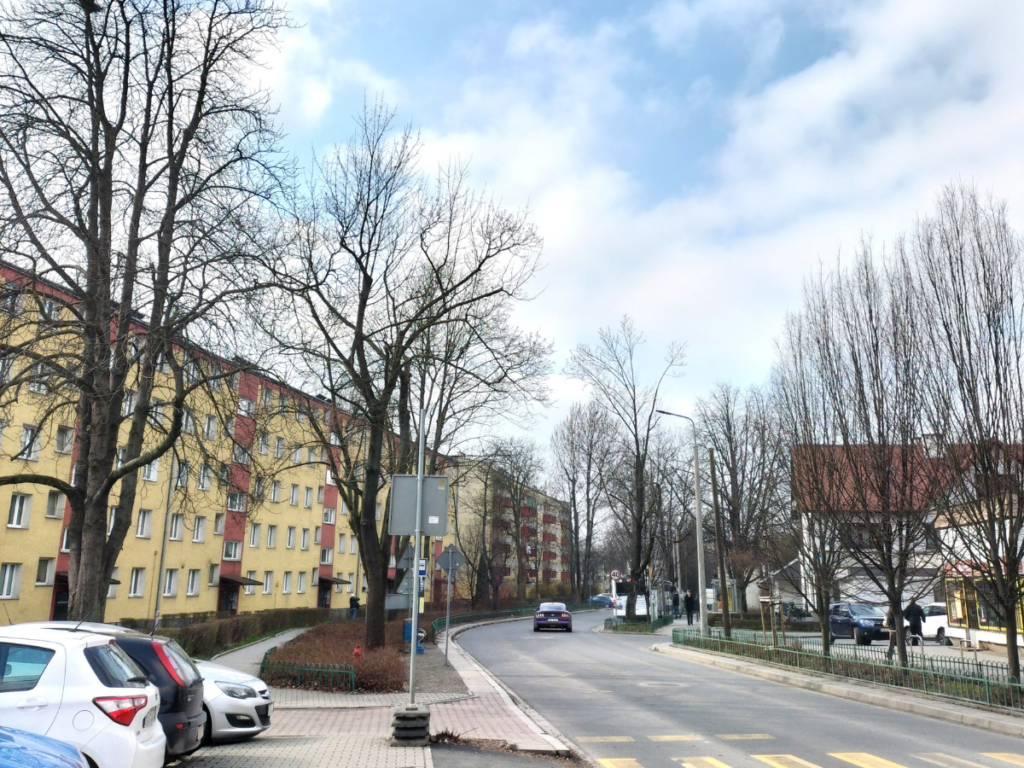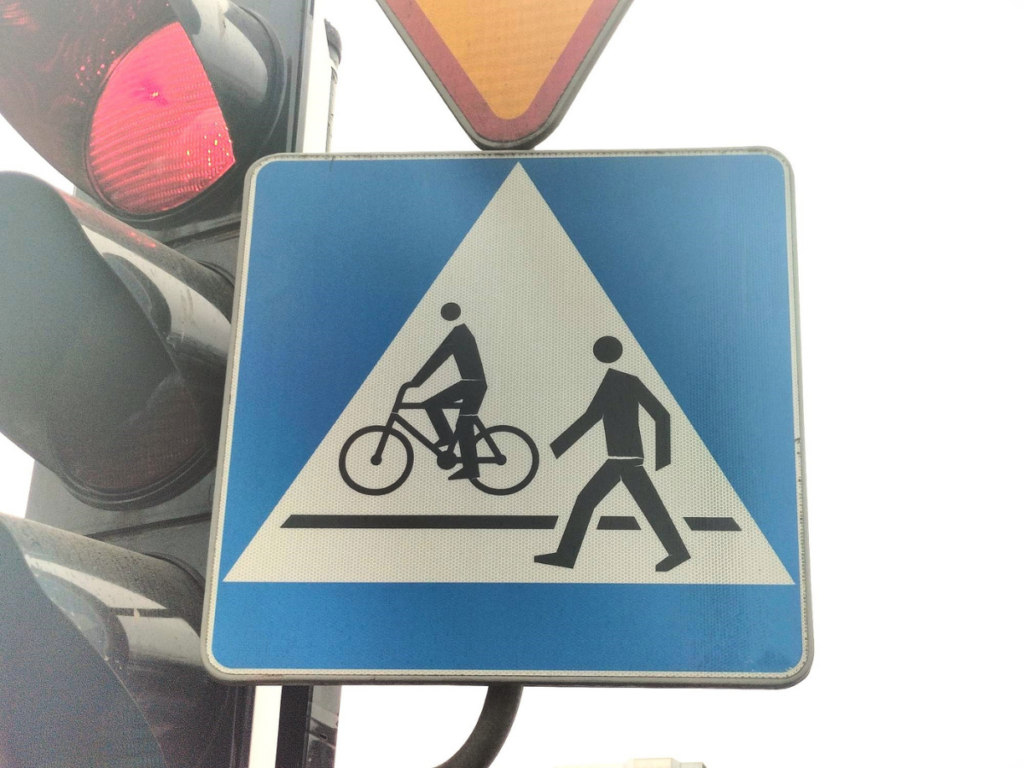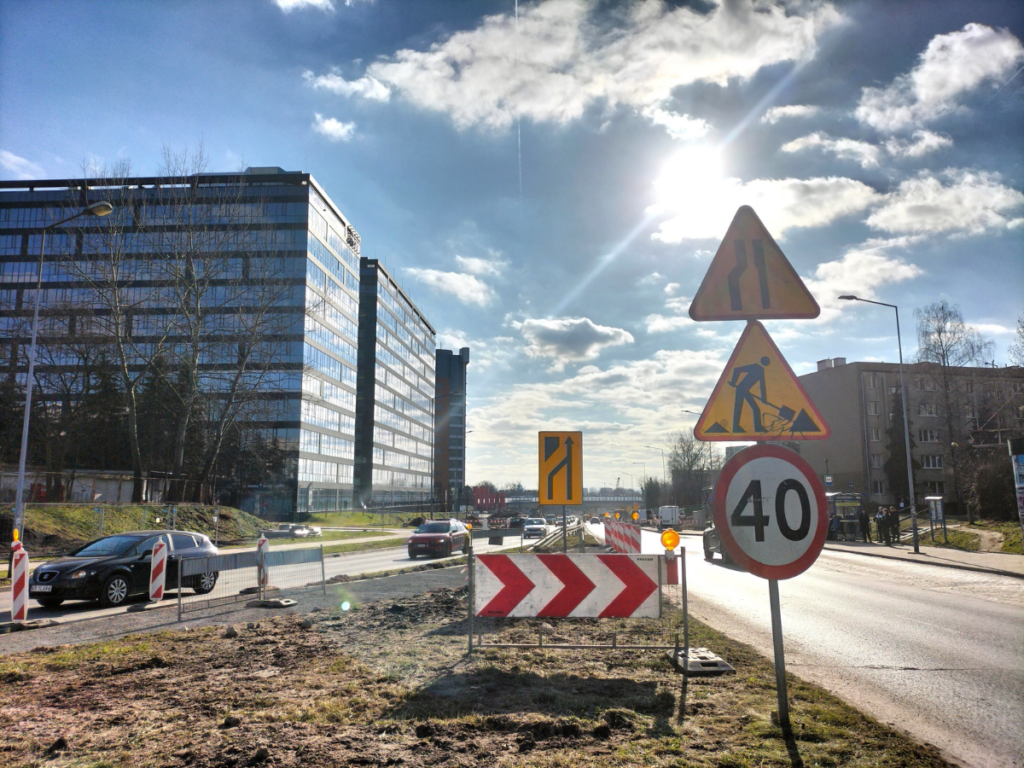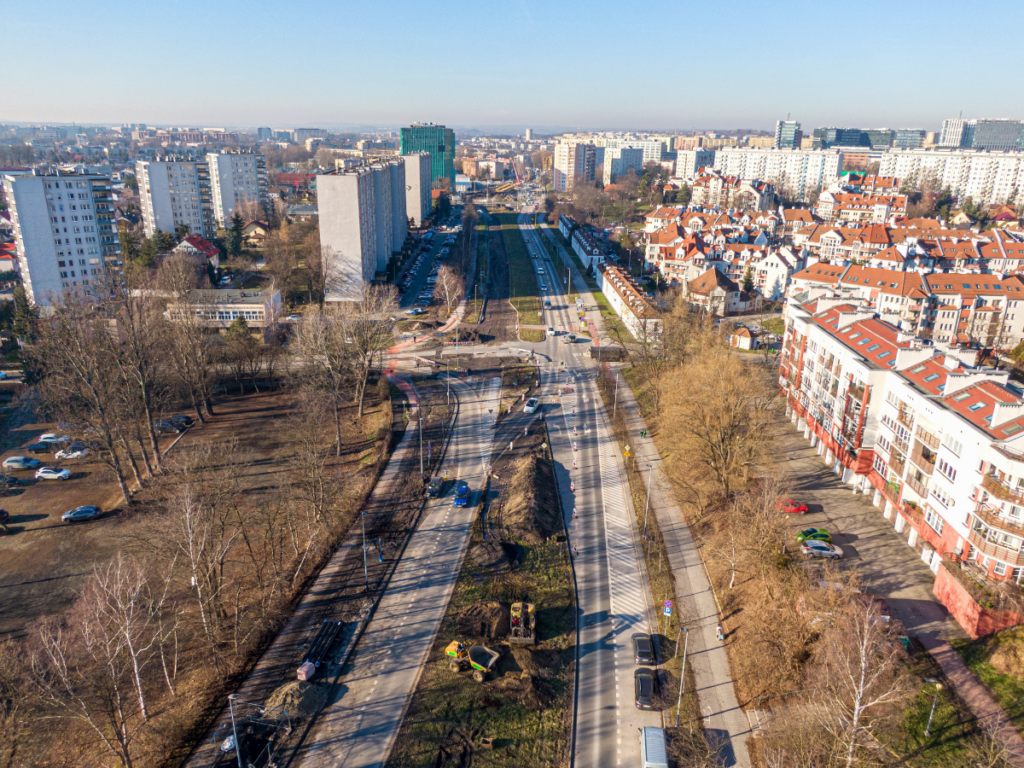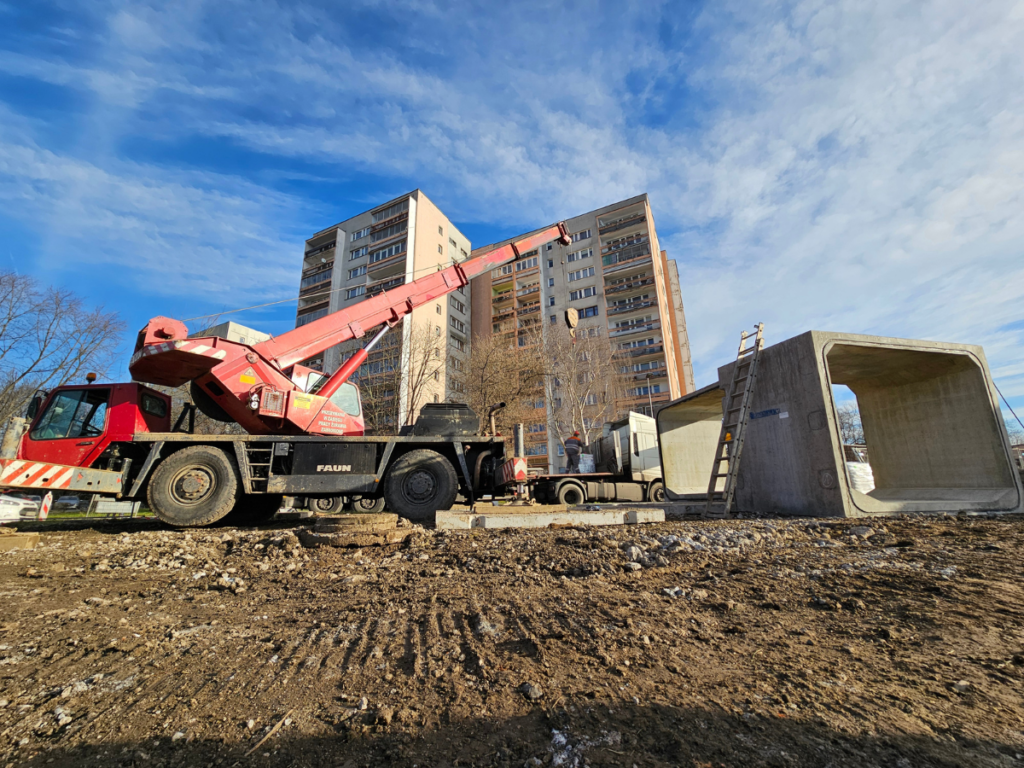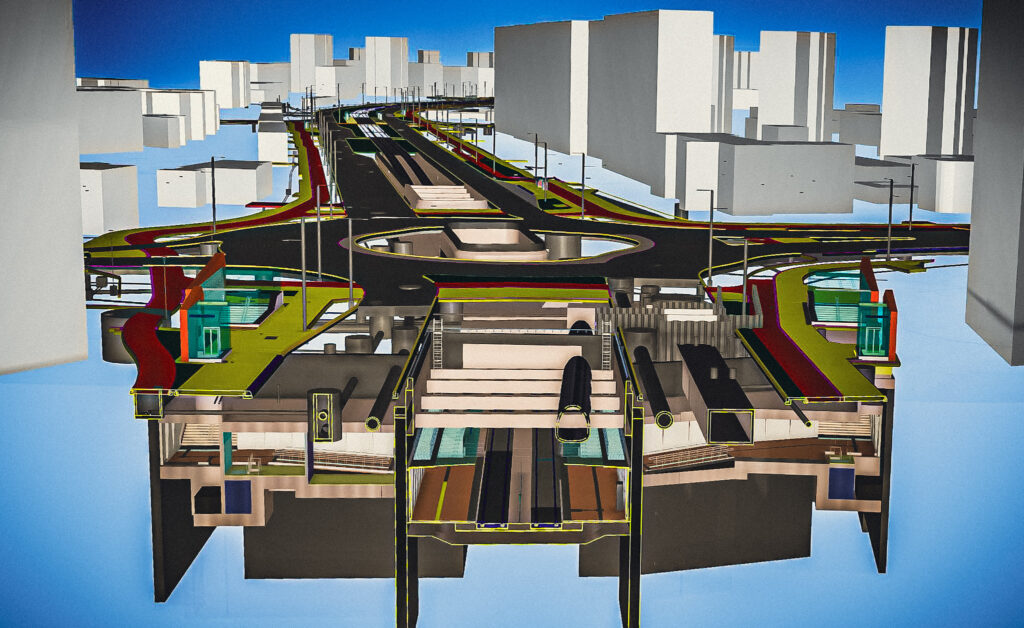In connection with the construction of a new route of the Dominican Sudo as part of the Tram to Mistrzejowice project, traffic organization in the area of Mlynska and Miechowity streets will change starting March 16. Miechowity Street will be closed, and there will be narrowing on Mlynska Street.

What will change?
- The existing switch on Mlynska Street will be moved north, towards the Polsad traffic circle.
- At the connection of Miechowity Street with Mlynska Street, vehicular traffic will be closed – a detour will be possible through Stanislaw ze Skalbmierza Street. At the same time, public transportation will run in this place on the current route and shuttle traffic will be introduced on a paved widening, available only for public transport vehicles and construction.
- The bus stop “Miechowity 03” will be moved to the intersection of Bohaterów Wietnamu Street and Młyńska Street.
The new traffic organization will be introduced on March 16, starting at 5:00 am, and will last until August.
Update on 15.03.2024:
We inform you that in connection with Thursday’s field meeting (14.03.2024) of representatives of the Board of Roads of the City of Krakow, the Municipal Traffic Engineer, the Board of Public Transportation, the contractor and the public party, a decision has been made to maintain the possibility of entering passenger cars from Mlynska Street into Miechowity Street. The MIR has pledged to analyze and approve the proposed changes as soon as possible. In turn, the contractor is ready to implement the corrections approved by the traffic organizer.
At the same time, we emphasize that due to the complexity and extensiveness of the work related to the reconstruction of the Dominican River, the exact location of which will be known at the time of the uncovering after the COR, it may be necessary to return to the original design of the temporary traffic organization, i.e. to make the entrance to Miechowity Street available only to public transport vehicles and the construction of the
